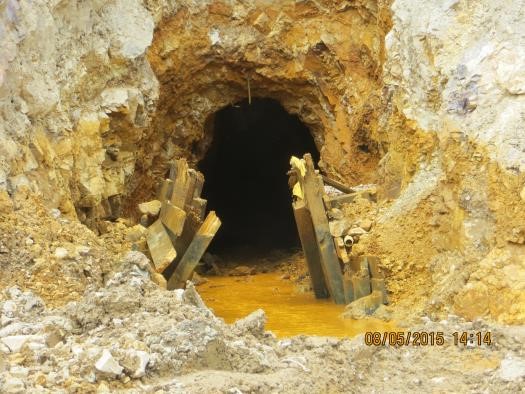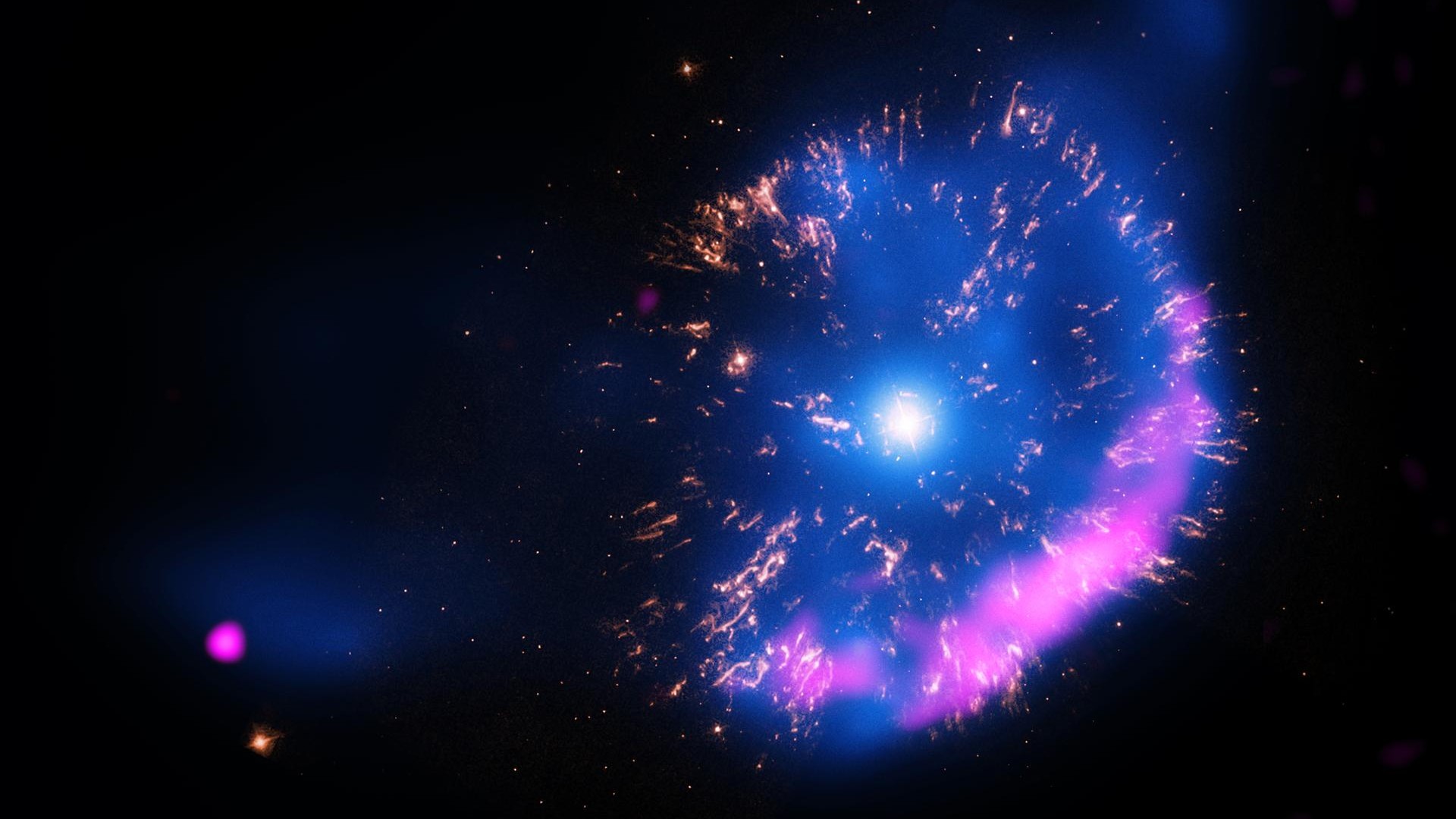Contaminated River: Photos of a Colorado Mine Spill
Three million gallons of water contaminated with heavy metals and other toxins spilled out of Colorado's Gold King Mine, turning the Animas River a mustard color and contaminating waterways. Here's a look at the toxic spill, with images courtesy of the Environmental Protection Agency (EPA). [Read the full story on the mine spill cleanup]
Yellow waters
On August 5, Environmental Protection Agency (EPA) workers who were investigating a slow leak of contaminated water from the defunct Gold King Mine in San Juan County, Colorado, accidentally breached an debris wall and sent at least 3 million gallons of sickly yellow water gushing into a tributary called Cement Creek. The contaminated water headed downstream into the Animas River, which in turn flows into the San Juan River in southwestern Colorado.
The accidental release has triggered an emergency response by the EPA and has highlighted the problems of abandoned mines in Colorado.
Hazardous landscape
According to the Colorado Division of Reclamation Mining & Safety (DRMS), there are approximately 23,000 abandoned mines dotting the state. Prospectors began flocking to the state's high mountains in the 1800s in search of gold and other valuable minerals. As mining became big business, environmental concerns lagged.
In 1977, Congress finally passed a law, the Surface Mining Control and Reclamation Act, that required operators to have a plan for cleaning up after a mine peters out. The law also established a fund to help state governments clean up long-abandoned mine sites. The Colorado DRMS has reclaimed 6,127 abandoned mines since 1980.
Get the world’s most fascinating discoveries delivered straight to your inbox.
The Colorado DRMS receives about $2 million a year in federal funding to clean up mines, paid for by taxes on coal-mining companies in the state. It costs about $5,000 just to close an abandoned mine to prevent curious tourists from falling into shafts; according to the agency, there is "minimal funding" available for environmental cleanup.
Here, water flows from the mine after the EPA cleanup crew inadvertently breached a natural, unconsolidated debris wall that was holding contaminated water back.
A surprise breach
A pH test of the water flowing from the Gold King Mine breach on August 5, the day of the accident. The water coming from the mine was at a pH of 4 to 4.5, which is on the acidic end of the scale (a pH of 7 is neutral).
Cement Creek
The Gold King Mine is near Silverton, Colorado, a town whose name hints at its mining history. The area around the mine has previously been nominated for listing as a Superfund site.
When the EPA breach of the mine occurred, the cleanup crews were actually trying to address problems from another mine, the Red and Bonita mine, further down the mountain, according to a May 2015 fact sheet. That mine had been leaking 300 gallons per minute of acidic water loaded with heavy metals into Cement Creek, seen in this image. Cement Creek flows into the Animas River, which had poor water quality prior to the Gold King accident. Testing by Colorado Parks and Wildlife had found no fish in the two mile stretch of the Animas River below Cement Creek.
Treatment pond
As of August 8, the Gold King Mine was releasing approximately 500 gallons of heavy-metal-contaminated water into Cement Creek per minute, according to the EPA. This water is now being treated in emergency settling ponds, one of which is seen here.
The water in these ponds is treated with caustic soda (sodium hydroxide) and lime (calcium oxide), which are both very basic in pH. This treatments counteracts the acidity of the mine water. The EPA is also treating the water with a clumpy flocculent material to encourage heavy metals to settle out into the sludge in the bottom of the holding ponds instead of flowing downstream.
Emergency Treatment
An aerial photograph taken on August 7 shows two quickly-constructed settling ponds at the site of the Gold King Mine water release. By August 10, the EPA had constructed an additional two ponds on-site and reported that the water flowing to Cement Creek from the mine was actually less acidic and cleaner than the water in the creek before the disaster — hinting at the slow environmental destruction caused by abandoned mines in the area.
Yellow plume
Contaminated water flows from the Gold King Mine in a photograph taken on August 5. The water is yellow because it carries dissolved pyrite, otherwise known as fool's gold or iron sulfide, according to KUNC. When the dissolved pyrite hits air, it forms sulfuric acid. The acid then eats through the rock in the mine, dissolving out heavy metals like zinc and lead.
Before the accident, the EPA was trying to build a bulkhead in the nearby Red and Bonita Mine that would essentially flood the mine with water, pushing out any air. Without oxygen, the reaction that creates sulfuric acid would not occur.
Acid water
An acidic plume of water laden with heavy metals made its way down Cement Creek and into the Animas River following the Gold King Mine breach. The Animas flows into the San Juan River and then into Lake Powell at the Utah/Arizona border. As of August 10, this bright yellow plume had dissipated and was no longer visible in the San Juan.
However, the Animas remains closed for recreation until at least August 17, according to the EPA. Testing of both the Animas and San Juan rivers is ongoing.
Testing the waters
An EPA sampling kit sits ready to test the waters downstream from the Gold King Mine breach on August 8. Fish and Wildlife officials are also testing for wildlife impacts in the waterways below the spill. As of August 10, there had been no sign of widespread fish mortality in the Animas river or in the San Juan river, according to an EPA statement.
Downstream Impact
A view of the San Juan river in Durango, Colorado, shows the yellow-tinted plume traveling downstream on August 7. As the contaminated water has moved into New Mexico, state and EPA officials were working to expand testing and assess the impact of the spill. The Navajo Nation in the Four Corners region of Utah, Arizona and New Mexico is particularly endangered, as the San Juan provides irrigation and drinking water for the tribe. The Nation's president, Russell Begaye, said during a community meeting on August 9 that he plans to sue the mine at the EPA.
Follow Stephanie Pappas on Twitter and Google+. Follow us @livescience, Facebook & Google+.

Stephanie Pappas is a contributing writer for Live Science, covering topics ranging from geoscience to archaeology to the human brain and behavior. She was previously a senior writer for Live Science but is now a freelancer based in Denver, Colorado, and regularly contributes to Scientific American and The Monitor, the monthly magazine of the American Psychological Association. Stephanie received a bachelor's degree in psychology from the University of South Carolina and a graduate certificate in science communication from the University of California, Santa Cruz.












